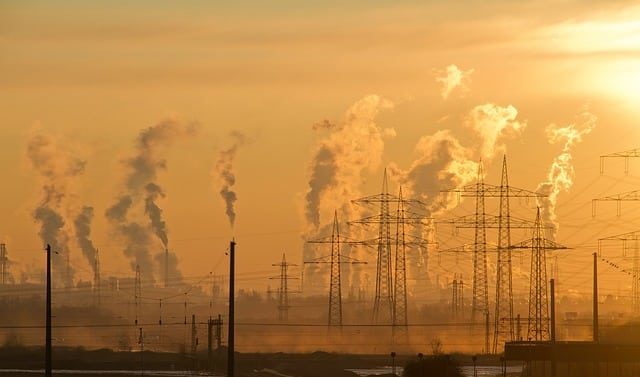Nearly halfway through a decade critical for mitigating climate change, US utilities and investors plan to add 133 new natural gas-fired power plants to the nation’s grid, as reported by S&P Global Market Intelligence. Additionally, 4 oil-fired plants and two coal-fired plants are either under construction or in early development.
These plans for new fossil fuel-based power generation emerge amidst growing concerns over increasing power demand driven by electrification and industrial growth.
Surging Power Demand in the U.S.
Electricity use in the United States was around 4,085 terawatt hours in 2022, per Statista data. Projections indicate that U.S. electricity consumption will rise to 5,178 terawatt hours by 2050. That’s an increase of about 27% from 2022 levels.

In December 2023, grid regulators warned of potential power demand surpassing supply in the coming decade. Notably, consulting firm Grid Strategies noted that the “era of flat power demand is over.”
According to some experts, long-term investments in natural gas infrastructure pose a threat to the nation’s commitment to halving economy-wide greenhouse gas emissions by 2030, which could result in stranded assets.
For instance, Lauren Shwisberg, a principal in the carbon-free electricity practice at RMI, emphasized the need for a significant reduction in gas generation and emissions in the power sector by 2035. However, current utility plans suggest otherwise.
RMI’s latest forecast, based on data from 121 utility resource plans, projects an 18% increase in US natural gas-fueled power generation between 2024 and 2035.
This trend raises concerns about aligning energy development with climate goals, highlighting the challenges of transitioning to a cleaner grid.
Balancing Climate Goals with Gas Infrastructure
Limiting global warming to 1.5°C above preindustrial levels calls for states to cut emissions across sectors by nearly 50% by 2030. However, US CO2 emissions from gas plants were 39% higher in 2023 than in 2017, as per the US Energy Information Administration. Notably, 2023 saw CO2 emissions from gas plants surpass those from coal for the first time.

More remarkably, the surge in energy use by data centers, driven by the rise of AI, has placed the energy industry in a challenging position.
Estimates show that power demand from data centers will explode. The International Energy Agency forecasts that energy use in data centers will rise to around 1,050 TWh in 2026, from 200 terawatt-hours (TWh) in 2022. Putting this in context, this is equivalent to the energy demand of Germany.
Ernest Moniz, head of the nonprofit energy research group EFI Foundation, addressed this power concern during a recent interview.
“There’s some battery storage, there’s some renewables, but the inability to [quickly] build electricity transmission infrastructure is a huge impediment. So we need the gas capacity.”
Monitz emphasized that natural gas still has a role in a decarbonized world. Despite this, US utilities continue to advance new natural gas projects. And while ratepayer advocates, environmental groups and climate-conscious corporate customers closely scrutinize their plans.
Regional Developments and Controversies
Wisconsin Electric Power Co., part of WEC Energy Group, seeks state approval for $2.1 billion in rate increases to fund 2 new natural gas-fired plants, an LNG storage facility, and 33 miles of pipelines. This infrastructure will replace 4 coal units shutting down by 2025.
In Arizona, the Salt River Project (SRP) plans to add 2 GW of gas-fired generation by 2035 to integrate 9.5 GW of renewables and storage and replace over 1.3 GW of retiring coal capacity. SRP cites a 40% rise in demand over the next decade.

Critics, including the Sierra Club, argue this plan will exacerbate water issues, raise costs, and worsen the climate crisis. SRP’s analysis showed no-gas options would not be reliable or affordable.
In Texas and the Southeast, utilities are pushing for more natural gas generation. Duke Energy’s updated plans for the Carolinas include 10 new gas-fired units, adding nearly 9 GW by 2033. These “hydrogen-capable” plants aim to help Duke reach carbon neutrality by 2050, despite public concerns over rising renewables costs.
Georgia Power Co.’s proposal for over 1.4 GW of new gas and oil-fired power by 2027 was approved, despite Microsoft’s claims of over-forecasting demand. The Southern Environmental Law Center estimates these investments will cost customers about $3 billion.
Critics argue that regulators in states without emissions reduction laws focus solely on costs, ignoring climate benefits. For a watchdog utility group’s leader, David Pomerantz, utilities’ attempts to balance decarbonization goals with building new gas plants are contradictory.
As the US faces growing power demands and strives to meet climate goals, new fossil fuel plants raise significant concerns. The projected increase in natural gas infrastructure may conflict with the nation’s emissions reduction commitments, highlighting the challenges of balancing energy needs with environmental responsibilities.

